‘If You Fail to Plan, You Are Planning to Fail’ – Benjamin Franklin
Introduction
Australia currently faces the most complex and challenging strategic environment since World War II. While international armed conflict is not certain, the Australian Defence Force (ADF) must be ready to handle Prisoners of War (POW)[i] during conflict. In past major conflicts, a common trend has been observed where the number of POWs is grossly underestimated, resulting in an accelerated and unorganised hunt for resources to fulfil operational needs. This includes a widespread lack of doctrine and policy that provides adequate guidance for managing the unique challenges that occur on operations.
The planning and management of Detention Operations and POWs are often overlooked in conflicts, with States mainly focusing on combat itself. However, this approach has consistently led to a failure to learn important lessons from past conflicts, as shown by the experiences of World Wars I and II, the Korean War, Vietnam War, Balkans, Falklands, and Iraq wars. As the threat of large-scale conflict rises, the ADF must break this pattern of neglect and ensure that lessons from the past are incorporated into the planning and management of POWs.
Insights from examining past conflicts include better methods for planning, categorising, and ensuring the safety of prisoners; strategies to reduce hostility and hostile intentions; and fostering skills and attitudes that will be valuable after the conflict ends. By adopting and applying these lessons, the ADF can improve its ability to manage POWs effectively and support the overall success of its military operations.
This paper aims to identify key lessons from past conflicts, including examples from Afghanistan and Ukraine, regarding the planning and management of POWs, and to offer recommendations for the ADF to prevent repeating these mistakes. A commitment to ongoing learning and improvement, proactive planning, and adopting best practices in POW treatment is essential. Failure to manage POWs with dignity, compassion, and adherence to International Humanitarian Law may threaten national resolve and social cohesion.
International armed conflict
This paper focuses exclusively on international armed conflict (IAC), as it is only in IAC that POWs are taken/held. An IAC is a conflict between two or more States[ii] and is characterised by a clear differentiation between combatants and civilians, with distinct detention rules and procedures applicable to each group. IACs offer the chance for a definitive end to hostilities, followed by an organised repatriation of enemy combatants.
In contrast, a Non-International Armed Conflict (NIAC) involving non-State actors does not have a clear distinction between combatants and civilians, which makes applying detention rules based on status more difficult. Decisions on detention in these conflicts may need to focus on individual behaviour and actions rather than solely on status-based rules. Moreover, non-international armed conflicts might lack a definite beginning or end, further complicating detention decisions and the enforcement of detention rules.
Policy and doctrine
Military strategy and policy are products of a nation's overall strategy. Detention and POW issues should be seen as essential parts of any National Security Strategy or military plans for large-scale combat operations during an IAC. Currently, there is no mention or consideration of Internment,[iii] or Detention Operations and its requirements in Australia’s National Defence Strategy or ADF Concepts.
The last time the Australian Government issued an ADF internment or detention policy was in 2011 for Operation Slipper. The policy enabled the ADF to carry out specific detention operations in Afghanistan as part of the NATO International Security Assistance Force (ISAF) Mission. Operations in Afghanistan were part of the Global War on Terror and, therefore, classified as a NIAC; as a result, POWs and large-scale, long-term internment of enemy combatants were not considered. The policy was developed by Defence in consultation with the Department of Prime Minister and Cabinet (PM&C), Department of Foreign Affairs and Trade (DFAT), and the Attorney-General's Department (AGD).
The International Policy Division and the Vice Chief of the Defence Force Group are jointly responsible to the Chief of the Defence Force (CDF) and the Secretary of Defence for providing advice on POW and detainee management issues. They do this in consultation with the wider Department of Defence, PM&C, DFAT, and AGD, for the Minister of Defence and the government’s consideration.
Without clear policy or direction, operational planners are limited to developing plans based on broad guidance from international humanitarian law and Australian domestic law. These laws specify fundamental human rights and requirements that must be observed, but do not offer specific guidance to the ADF regarding government expectations. This is particularly important if the Australian Government chooses to hold POWs within Australia.
The lack of consideration for detention operations from a security and intelligence oversight perspective led to strategically damaging and embarrassing revelations and a worldwide backlash against US operations in Iraq.[iv]
The doctrine that provides guidance on Detention Operations is another significant area that the ADF have given little consideration or weight of effort. At the time of writing this paper, ADF Integration Doctrine, ADF-I-3 Prisoners of War, Internees, and Detainees (PWID), was only published in 2024,[v] whilst the Application level (the how-to) doctrine does not exist.[vi]
Before the publication of ADF-I-3 PWID, the only dedicated practical guide for conducting detention operations by the ADF was LWP-G 0-1-7 Internment and Detention 2007, an Army-specific doctrine. This document, released as Developing Doctrine in 2007, remained in effect until its cancellation in 2024 with the release of ADF-I-3 PWID.
Planning considerations
Insufficient planning for POW operations can cause failures at tactical, operational, and strategic levels and create broader legal, humanitarian, and institutional challenges that weaken military effectiveness and long-term stability. These failures can damage trust and confidence within the military itself, among allied nations and coalition partners, and harm public perception of military legitimacy.
Furthermore, legal and humanitarian institutions may increase scrutiny, questioning adherence to international conventions. A decline in trust across these levels can significantly impair operational effectiveness and complicate the achievement of strategic objectives. To effectively manage POW operations and ensure smooth internment and detention processes, planning must incorporate these essential considerations from the beginning.
Planners. Central to the planning process is ensuring the right people with the appropriate expertise and experience in internment and detention operations are involved to make certain that all aspects of detention operations are considered. This panel should include members from logistics, personnel, military police (MP), medical, engineers, security and estate group (SEG), and legal, as a minimum. The inclusion of MPs is especially important because of their expertise in internment and detention operations and their clear understanding of the Geneva Conventions. The best time to create a plan is during peacetime, rather than creating one rapidly during conflict.[vii]
Tracking. It is vital that tracking of POWs from the moment of capture remains a priority. Capture cards must be completed at the point of capture and then forwarded to the detention operations Joint Task Force for entry into a tracking system by the J/G1.[viii] They should avoid using multiple tracking systems to prevent losing any POW, ensuring their location can always be accurately determined. In accordance with Article 122 of the 3rd Geneva Convention (GCIII), the ADF must provide specific information on POWs to the National Information Bureau (NIB).
The NIB must also be notified of any transfers, releases, repatriations, escapes, hospital admissions, and deaths. The NIB will then pass this information to the POW country concerned and their families via the International Committee of the Red Cross (ICRC) Central Tracing Agency. The Australian Government is responsible for establishing clear procedures for the creation and operation of the NIB. These should be developed during peacetime so it can start functioning as soon as possible after an international armed conflict begins, ideally before the conflict starts. Currently, there is no definitive information on who will form the Australian NIB (GCIII Article 122 requirement).
Leadership. Many problems that have affected past internment and detention operations involved the tactical and operational commanders. These problems included unclear authorities or reporting chains, poor leadership, lack of discipline, and vague rules of engagement.[ix] If Australia plans to hold POWs within their area of operations, the ADF needs to establish a separate task force led by a one-star. This will enable the commander to conduct mission analysis and plan internment or detention operations accordingly.[x]
POW Numbers. When planning internment or detention operations, it is crucial to focus on two key factors: the potential number of POWs and the number of troops needed to guard and manage them. During WWI and WWII, Australia interned two groups: POWs and civilians (internees). However, for unclear reasons, Australian records did not distinguish between these two groups separately.[xi] The terms ‘prisoner’ and ‘internee’ were used interchangeably with no differentiation between each group.[xii] During both world wars, Australia interned 7,000 and 12,000 people, respectively, in camps throughout Australia.[xiii]
However, these figures are very small compared to the total number of German prisoners taken during both wars: 1,200,000 during WWI, and 11,094,000 in WWII.[xiv] Given the resource-intensive nature of detention and internment operations, mass surrender of enemy forces could serve as a disruption tactic to overwhelm detention facilities. If detention capacities are exceeded, the forces’ ability to advance and secure gains may be hindered as they shift focus to managing the influx of prisoners.[xv]
Large numbers of POWs in conflict are not uncommon. In January 1941, the 6th Australian Division captured around 40,000 Italian POWs during the Battle of Bardia in Libya. Considering that the Division had roughly 15,000 soldiers, managing and securing such a large number of prisoners was a significant challenge.[xvi]
11,313 Argentinians were either captured by or surrendered to UK forces during the 1982 invasion of the Falkland Islands.[xvii] The number of North Korean POWs held by coalition forces during the Korean War exceeded 176,000.[xviii] In Operation Desert Storm, the United States 800th MP Brigade managed and detained 69,822 individuals.[xix]
One of the many factors considered when estimating POW numbers is the size of the opposing force. For example, if we look at China's military personnel figures, in 2025, the active military personnel numbered 2,035,000, and the reserve forces were 510,000, giving them a total force of 2,545,000.[xx]
If you take just five percent of this number, which is 127,250 POWs, that is a reasonable estimate. In fact, five percent might be too low. The percentage of POWs relative to total enemy forces mobilised during WWI and WWII was 9.8 percent and 29 percent, respectively. With such large numbers of POWs, it is crucial to accurately estimate enemy POW figures before conflict begins and to consider the location for POW camps, especially where POWs may be interned in Australia.
Location. The location of POW operations can greatly influence the planning process and the successful execution of the mission, as various location-specific factors must be considered. When assessing the suitability of sites, it is crucial to account for any geographical limitations that could impact the movement of POWs, supplies, and the staff required for detention operations.
The chosen locations and POW movement should align with the overall strategy, and there must be adequate air and land transport options available to transfer POWs without disrupting other operational tasks.[xxi] Australia has a variety of existing infrastructure that could be used to house POWs, including military bases, immigration facilities, sports grounds, and warehouses that may be suitable. Planners need to assess the suitability of these facilities for housing POWs, considering their climate, capacity, geographic location, and security features, including proximity to current establishments and training areas.
Australia's climate varies greatly depending on the region, from hot and humid conditions in the north to cold and dry conditions in the south. Planners must factor in the climate's effect on detention operations, including the need for shelter, water, and medical care. It is important to note that under GCIII article 22, POWs are not to be housed in prisons. This is because prisons are used to punish those held within, whereas POWs are detained to prevent their return to hostilities.
Accommodation. It is essential that any accommodation for POWs consistently maintains high standards of health and hygiene. The risk of disease in this population is considerable, and any outbreak could pose a significant challenge to control. Ensuring a clean and sanitary environment for POWs is not just necessary, but a top priority. Furthermore, it is important to remember that these standards embody humanitarian principles and the international community's commitment to treating POWs with dignity and respect. GCIII provides detailed regulations regarding the housing of POWs:
- Safety and Health: POWs must be accommodated on land, in ‘premises’ that are healthy, adequately heated or cooled, have sufficient lighting, are stormproof, and are equipped with efficient sanitary arrangements (GCIII, Article 22 and 25).
- Premises: POWs should be accommodated in housing conditions that are as favourable, or more so, than what the detaining power provides for its own forces in the same area. This provision aims to prevent the intentional housing of POWs in substandard or inadequate accommodations compared to the detaining power's forces, thereby supporting fairness and upholding humanitarian principles (GCIII, Article 25).
- Bedding and Clothing: POWs must be supplied with adequate bedding, and their clothing must be kept clean and in good repair. The detaining power must provide sufficient clothing, underwear, and footwear suitable for the relevant climate (GCIII, Article 22 and 27).
- Sanitation and Hygiene: POWs must have access to sufficient sanitary facilities, including ablutions, washbasins, showers, and laundry areas, with separate facilities for females. They must also be provided with suitable cleaning and washing materials (GCIII, Article 29).
- Exercise and Recreation: POWs must be given the opportunity to take part in recreational and sporting activities, including access to time and space for these activities (GCIII, Article 38).
Capacity. When choosing locations for POW facilities, planners should consider both current and future capacity needs, including the number of POWs and resource availability. Expanding the facilities might require building additional structures or modifying existing ones to boost capacity. Planners must ensure these modifications align with the Geneva Convention requirements and do not endanger the safety or security of POWs or staff.
In addition to expanding physical facilities, planners should also consider the need for more staff and resources to manage and care for a larger population of POWs, as well as increasing the availability of transportation, supplies, and equipment. Contingency plans should be developed for situations where the facilities reach capacity unexpectedly, such as during a sudden influx of POWs caused by operations or other emergencies (fire, flood, etc.). This may involve setting up temporary housing or transferring POWs to alternative facilities. It is important to ensure that the expansion of facilities and the addition of resources are implemented in a timely and efficient manner to prevent overcrowding and to ensure that POWs continue to receive adequate care and support.
Sub-Categories & Categorisation. Consideration should be given to separating high-risk POWs (violent, radicalised), officers from enlisted personnel, and to separation based on religious or political beliefs. Segregation of subgroups may prevent occurrences of violence, riots, and radicalisation among susceptible individuals. [xxii] As this paper only addresses a POW as defined by Article 4 of GCIII, and considering the convention was written in 1949, it raises contemporary concerns about who should be recognised as a POW. Major challenges include determining whether an individual’s status as a national of the capturing State affects their eligibility for POW status, as well as assessing the obligation of regular armed forces to clearly distinguish themselves from civilians to qualify for such status.[xxiii]
At the point of capture, it is usually determined whether the person is a POW or not. If they are a POW, then they should be granted POW rights in accordance with GCIII. If it is unclear whether the person is a POW, they must be regarded as a POW (UNCONFIRMED) and given the same rights as a POW GCIII. Where a captured person is assigned the status of POW (UNCONFIRMED), an Article 5[xxiv] tribunal must be convened to determine the captured person's category.
Segregation. Categorisation of POWs ensures proper segregation and that POWs are suitably accommodated and managed. Article 22 of GCIII states that ‘…such prisoners shall not be separated from prisoners of war belonging to the armed forces with which they were serving at the time of their capture, except with their consent.’ However, men, women and children[xxv] must be housed separately, with separate hygiene facilities.[xxvi] This not only safeguards the privacy and dignity of each prisoner but also helps to prevent potential conflicts or issues that could arise from shared accommodation.
To ensure the separation of high-risk POWs from others, it is necessary to sub-categorise them into high, medium, and low risk. The sub-categorisation may be determined by several factors including:
- Discipline record during internment
- Level of military training
- Reason for detainment
- Religious or radicalisation level.
This sub-category can also assign a numeric value from 1 to 5, where 5 indicates the highest risk and 1 the lowest. This helps in clear communication and management of the different risk levels.[xxvii]
Guard Force. POW facing guards should be military personnel, ensuring that POWs are treated in accordance with the principles of military justice and international humanitarian law. Military personnel are trained in the laws of war and are subject to military discipline, which helps to ensure that they treat POWs with respect and humanity.
Civilian guards, on the other hand, may lack the same level of training or discipline and could be more likely to mistreat or abuse POWs. Additionally, using military personnel to guard POWs helps maintain the chain of command and military authority. It guarantees a clear line of authority and accountability for the treatment of POWs, and that any mistreatment or abuse can be addressed through military channels.[xxviii]
All defence personnel, regardless of rank, specialty, or duty, can be utilised as part of the guard force. This highlights the importance of integrating specialised training for the guard force into the planning process. Members selected for guard duties must be chosen and vetted appropriately. Guards must be fully trained in the capabilities and limitations of non-lethal technologies and be well-versed in the Geneva Conventions.
Failing to have well-trained and disciplined guards who uphold a high standard may result in serious consequences for the ADF, such as the Abu Ghraib scandal. Additionally, any Detention Commanding Officer must ensure that any lapses in discipline by the guard force are promptly addressed, demonstrating to the POW population that the guards are held to a high standard, and so shall they.[xxix]
The ADF Detention Centre Supervisors Course is currently a five-day program run by the Defence Force School of Policing, providing a solid foundation in the knowledge required for handling POWs. Including GCIII information and other relevant knowledge for POW management would be enough to develop a specialised guard force program that could be delivered by currently qualified and experienced detention centre staff supervisors.[xxx]
Rehearsals. Regular exercises and rehearsals of the plan can help identify any gaps or weaknesses and ensure that the plan is executed effectively in a real-world scenario. This also helps to ensure that the ADF does not regard POW operations as a lower priority and gives it the attention it deserves. The ADF should allocate dedicated resources and time for training during exercises for large-scale detention or internment operations, something that has never been practised on a large scale by the ADF.
Incorporating POW operations into these exercises allows commanders to gain practical experience and understanding of the legal and planning requirements involved in the treatment and management of POWs. Without consistent practice, these vital aspects might be seen as just ‘another thing to learn and know,’ reducing their significance and potentially leading to inadequate preparation or compliance. By including POW operations in large-scale exercises, the ADF can foster a culture that values thorough preparation and legal adherence obligations.[xxxi]
Implementation and treatment
Point of capture – The initiation of detention operations happens at the initial moment of capture or surrender. This first phase is especially vulnerable to risks, as soldiers are responsible for disarming, restraining, searching, and maintaining security for the captured individuals in a potentially hostile environment. The unit tasked with detaining these individuals bears the primary responsibility for ensuring their safety, secure control, transportation, and coordinating their movement to a designated collection point.[xxxii]
Currently, only the Australian Army provides any form of point of capture training to its initial recruits. However, this training is simply a brief segment within the ‘Conduct Battle Craft’ section. The lesson plan is outdated, and the quality of teaching and practical application depends heavily on the instructor delivering it. If the instructor is an MP, the training they deliver may be more thorough and of higher quality than that given by any other rate or specialist.
If the ADF wants to reduce the risk at the initial point of capture, as this is the most vulnerable part of detention operations, they need to provide adequate training on the point of capture to all ADF members who might be involved in any upcoming conflict. Any training should cover prisoner handling procedures and techniques, including provisions of the Geneva Conventions. Training should also involve legal personnel and other subject matter experts when appropriate.[xxxiii] Last-minute or poorly delivered, hasty training will leave members inadequately prepared to engage enemy forces and may lead to POW abuses.[xxxiv]
Education Programs. Not all POWs share the same beliefs and allegiances. Assuming they do could lead to conflict and violence. This presents a unique chance to influence not only the POW but also their families and friends post-conflict.[xxxv] Post WWII, many German POWs involved in education programs changed their political views and viewed the US in a more positive light.[xxxvi]
It is also crucial to keep POWs engaged both mentally and physically. This helps reduce mental health issues and decreases the likelihood of criminal and aggressive behaviour, including riots. Many programs can be organised by the POWs themselves, using their education, trades, and professional qualifications and backgrounds. While this may not be a planning issue, it is a vital aspect of POW internment that deserves proper consideration and resources.
Language and Culture. Before any conflict, the ADF must establish a strong language capability, which is essential for executing a successful POW operation. Language and cultural factors should be incorporated into the planning of POW detention facilities and procedures. This includes creating incentives to encourage POWs to share valuable information, as well as strategies for propaganda and psychological operations aimed at persuading enemy combatants to surrender.[xxxvii]
Developing this before hostilities commence ensures the ADF can establish a smooth and transparent process for managing POWs throughout the conflict. The current number of trained linguists in the ADF will not be sufficient to meet the language skill requirements for POW operations and intelligence needs. Relying on contracted linguists may also be unreliable, as other government agencies will also demand their services during conflict.
Interrogation and exploitation
Every person captured may be lawfully questioned at the point of capture and at any later time for any information, such as to gather tactical intelligence. However, under Article 17 of GCIII, they are only required to answer five questions (name, date of birth, rank, service/ regiment/ unit, and serial number). Answering any additional questions is voluntary, and POWs cannot be pressured, coerced, or rewarded to answer beyond the mandated questions. Nonetheless, tactical questioning at the point of capture, screening, and interrogation of POWs is a vital part of the internment process. It can reveal valuable information and intelligence on the enemy’s operations plans.[xxxviii]
This information may also be used to determine their POW status and sub-category. During interrogations and exploitation, we are also trying to gather information about why they fight. “...to gain a better understanding of what motivates and sustains them can be used to shape the battlefield from 'behind the wire’.”[xxxix] Appropriately qualified personnel must conduct any interrogation or exploitation; however, members of the guard force must not be used for this purpose, as the lines between captor and interrogator may be blurred.
Induction Surveys. Conducting surveys on POWs during the induction process offers many benefits. During the Vietnam War, surveys on motivation and morale showed that, despite facing a numerically superior and heavily armed adversary, the Viet Cong remained resolute resolve.[xl] If similar surveys had been conducted with Iraqi detainees, they might have revealed that cash infusions into unstable regions often serve as additional income for opportunistic criminals or insurgents, rather than addressing systemic poverty. Such surveys could also have provided the United States with valuable insights into the motivations of the Iraqi population, helping develop a more strategic and culturally sensitive campaign plan.[xli]
A survey can also help classify POWs and assign them to appropriate camp areas by determining if they pose a risk to other detainees, their religious and political affiliations, and whether they have been radicalised or are vulnerable to influence radicalisation.[xlii] It also helps in developing suitable education programs for POWs, including re-education initiatives that can be used to reshape their beliefs and, potentially, post-conflict culture.
Conclusion
History has consistently shown that effective management of POWs is not just an operational requirement; it is a moral and strategic duty. In today’s increasingly complex global environment, the ADF must learn from past conflicts and ensure that internment and detention operations are given the priority they deserve. As challenges in modern international armed conflicts grow, failing to adequately plan and carry out these operations risks not only operational failures but also damage to Australia’s reputation and its commitment to international humanitarian principles.
To achieve its strategic objectives, Australia and the ADF must adopt a three-pronged approach. First, it is crucial to establish a clear national policy and doctrine that explicitly addresses POW management. Incorporating POW planning into National Defence Strategies will give commanders and planners definitive guidance instead of relying solely on generic legal frameworks. Second, the ADF must undertake a realistic assessment of POW numbers well before conflict arises.
Drawing on historical experience and anticipated enemy mobilisation, this foresight will ensure that infrastructure, personnel, and other critical resources are properly allocated. Third, comprehensive training and rehearsal programs must be incorporated into large-scale exercises. Regular rehearsals, along with initiatives to improve linguistic, cultural, and operational skills, will ensure that all personnel involved are well-prepared to handle the complex challenges of internment operations.
By adopting these recommendations, the ADF can turn POW management from a seldom-considered aspect into a fundamental part of modern military strategy. When adversaries believe they will be treated with dignity and respect upon capture, they are more likely to surrender, which can lessen both the intensity and length of conflicts. Moreover, ethical detention practices uphold Australia’s core values and foster social cohesion, post-conflict reconciliation, and long-term strategic gains.
The ADF now reaches a critical point. By focusing on structured policy development, careful planning, and thorough training, it can set a global standard in POW management, maintaining its commitment to humanity, justice, and strategic excellence.
End Notes
[i] Prisoners of War (POW) as defined in the 3rd Geneva Convention, are individuals who fall into enemy hands and belong to specified categories, including members of armed forces, militias, volunteer corps, resistance movements, and other affiliated groups. This includes individuals accompanying armed forces with official authorisation, merchant marine crews, and civilians who spontaneously take up arms against an invading force. To be considered a POW, militias and resistance movements must adhere to command structures, bear identifiable insignia, carry arms openly, and operate in accordance with the laws of war.
[ii] Convention (I) for the Amelioration of the Condition of the Wounded and the Sick of Armies in the Field. Geneva, 12 August 1949., Article 2 – Application of the Convention.
[iii] Internment refers to the holding of civilians held for security and safety reasons, in ADF-I-3 Prisoners of War, Internees and Detainees, Ed1, 2024.
[iv] David P Forsythe. 2006. ‘United States Policy toward Enemy Detainees in the ‘War on Terrorism.’ Human Rights Quarterly 28 (2): p 465–491.
[v] Integration doctrine explains how the joint force applies doctrinal principles to planning, conducting and enabling campaigns and operations. It further describes the use of military power within the information environment and maritime, land, air, cyber and space domains. It provides guidance on the application of philosophical principles embodied in single-Service and Group doctrine, in ADF Doctrine Handbook, Ed2, 2023.
[vi] Application doctrine describes the way particular tasks are conducted in an operational setting and is usually linked directly to integration doctrine. Capability managers, as the principal domain advisers, lead the development of ADF doctrine at the application level. These actions have the effect of linking domain capabilities to the integration level within the ADF Doctrine Hierarchy, highlighting the mutually supporting effects of these capabilities, in ADF Doctrine Handbook, Ed2, 2023.
[vii] Hussey. ‘Detention Operations as a Strategic Consideration’.
[viii] GCIII, Article 70.
[ix] Paul T Bartone. 2008. ‘Lessons of Abu Ghraib: Understanding and Preventing Prisoner Abuse in Military Operations.’ Defense Horizons 64 (Washington, DC: NDU Press, 2008).
[x] Hussey, ‘Detention Operations as a Strategic Consideration’.
[xi] According to National Archives of Australia, 2019, historical records did not make a clear distinction between detainees and POW, even though there were clear legal distinctions and the two groups had different rights. National Archives of Australia. 2019. ‘Wartime Internment Camps in Australia | Naa.gov.au. Naa.gov.au.’
[xii] National Archives of Australia. ‘Wartime Internment Camps in Australia’
[xiii] National Archives of Australia, ‘Wartime Internment Camps in Australia’
[xiv] Niall Ferguson. 2004. ‘Prisoner Taking and Prisoner Killing in the Age of Total War: Towards a Political Economy of Military Defeat.’ War in History 11 (2): 148–92.
[xv] Hussey, ‘Detention Operations as a Strategic Consideration’.
[xvi] Australian Army. (2015). Land Warfare Procedures – General: Internment and Detention Developing Doctrine (LWP-G 0-1-7).
[xvii] The Editors of Encyclopedia Britannica. 2019. ‘Falkland Islands War | Summary & Facts.’ In Encyclopedia Britannica.
[xviii] Allan R Millett. 2010. The War for Korea, 1950-1951 : They Came from the North. Lawrence: University Press Of Kansas.
[xix] J. R Brinkerhoff., Silva, T., & Seitz, J. 1992. United States Army Reserve in Operation Desert Storm. Enemy Prisoner of War Operations: The 800th Military Police Brigade. Alexandria, VA: Institute for Defense Analyses.
[xx] Global Firepower. 2022. ‘2021 China Military Strength.’ Www.globalfirepower.com. 2022.
[xxi] Hussey, ‘Detention Operations as a Strategic Consideration’.
[xxii] Benard, et al., The Battle behind the Wire.
[xxiii] Ellen Policinski. 2022. ‘Prisoners of War in Contemporary Armed Conflict: Interpreting the Third Geneva Convention 70+ Years after Its Negotiation.’ Humanitarian Law & Policy Blog. August 11, 2022.
[xxiv] GCIII.
[xxv] Child/Children as defined in ADF-I-3 PWID, as anyone under the age of 18 years.
[xxvi] GCIII. Art 25 & Art 29.
[xxvii] GCIII. Art 25 & Art 29.
[xxviii] Hussey, ‘Detention Operations as a Strategic Consideration’.
[xxix] Benard, et al., The Battle behind the Wire.
[xxx] AUSGOV, DoD. 2024. ‘Detention Centre Supervisor Course.’ LMP of 04 Dec 2024
[xxxi] Spencer L Willardson. 2024. ‘Trade-Offs and Prisoner of War Policy under Renewed Great Power Tension.’ Defense & Security Analysis, October, 1–17.
[xxxii] Osvaldo R Santigo. 2016/ ‘Multinational Coalition Task Force Detention Operations.’ Military Police. Sprint 2016: 13-16.
[xxxiii] Santigo, ‘Multinational Coalition Task Force Detention Operations.’
[xxxiv] Bartone, ‘Lessons of Abu Ghraib: Understanding and Preventing Prisoner Abuse in Military Operations.’
[xxxv] RAND. 2011. U.S. Prisoner of War, Detainee Operations Need More Advance Planning. (2011, June 9). Rand.org; RAND Corporation.
[xxxvi] Benard, et al., The Battle behind the Wire.
[xxxvii] Willardson, ‘Trade-Offs and Prisoner of War Policy under Renewed Great Power Tension.’
[xxxviii] Benard, et al., The Battle behind the Wire.
[xxxix] Ibid.
[xl] Ibid.
[xli] Ibid.
[xlii] Benard, et al., The Battle behind the Wire.
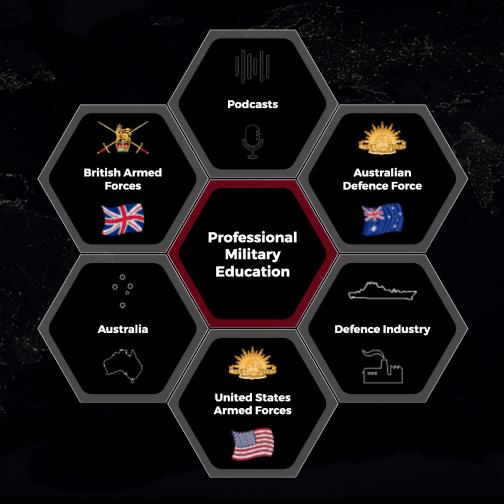


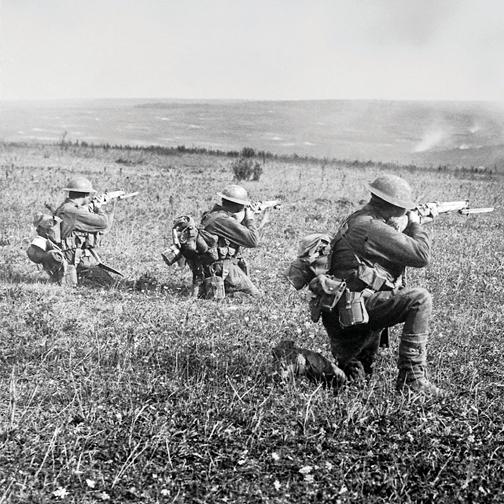


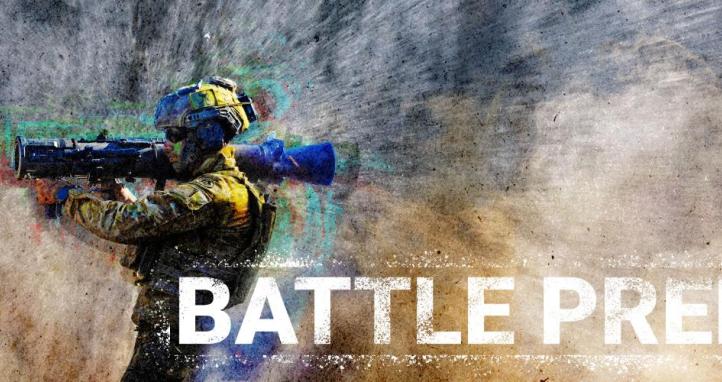
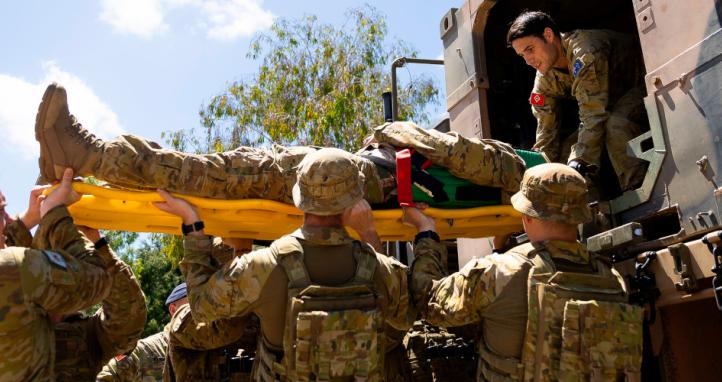
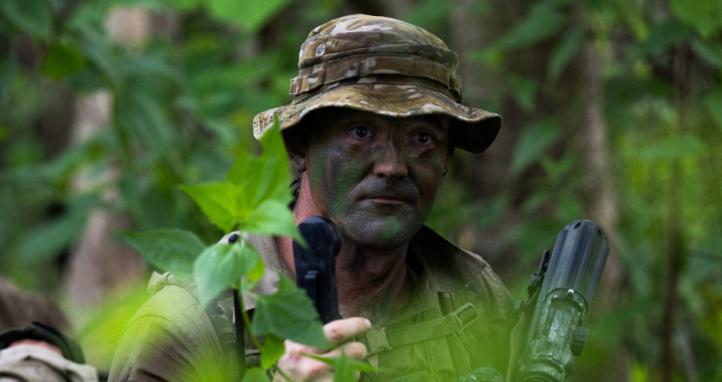
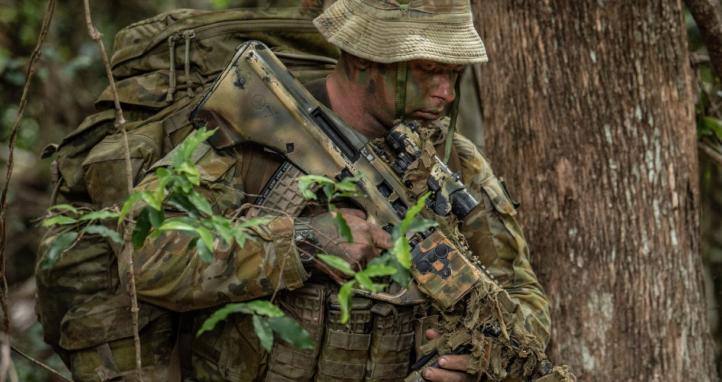
The list of planning staff that is described in the article must also include representatives from military intelligence. The screening and selection of prisoners of war for interrogation is an intelligence responsibility. Selected prisoners will be processed through designated interrogation centres by intelligence personnel. Interrogation is to be conducted in accordance with the Geneva Conventions and the directed operational intelligence requirements.
While the scope of the paper was deliberately focused on broader planning considerations for POW operations, we acknowledge that the integration of intelligence personnel is a necessary component of a comprehensive planning framework.
As you rightly noted, the Third Geneva Convention (GCIII) outlines obligations regarding the respectful handling of deceased POWs, including notification, documentation, and burial practices. These responsibilities must be clearly articulated in doctrine and rehearsed in planning to ensure compliance and uphold the dignity of those in our custody.